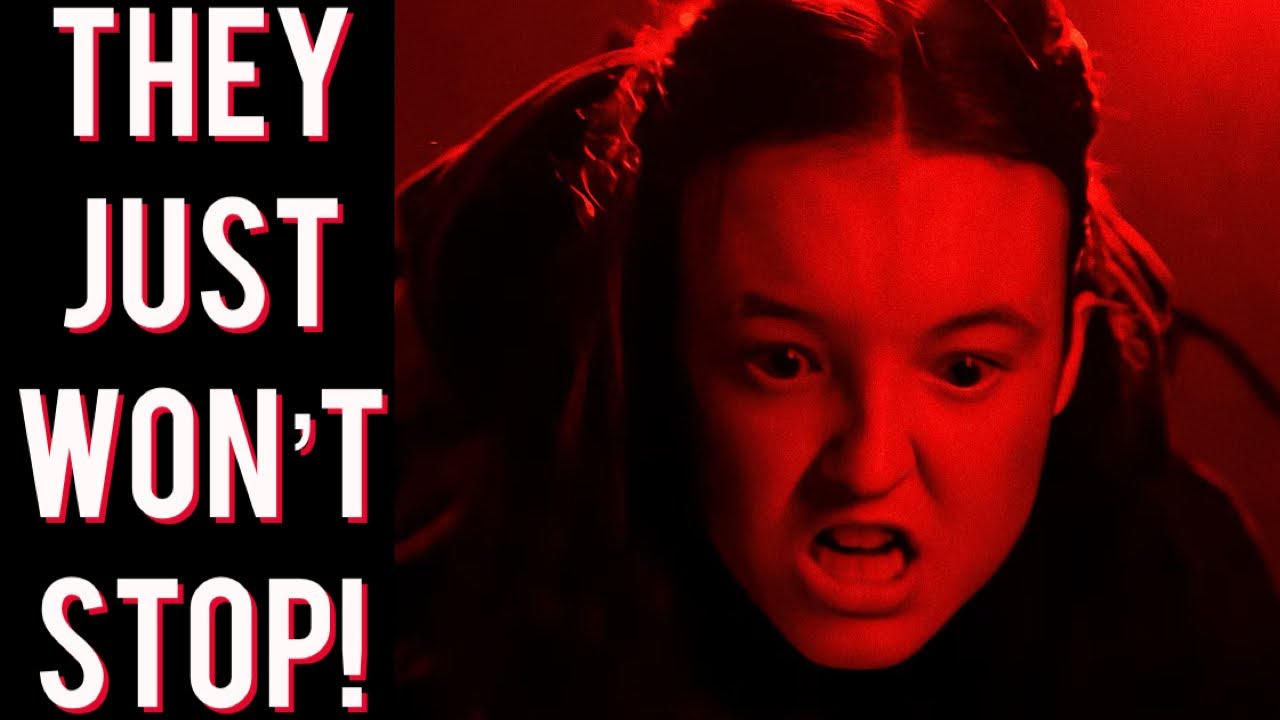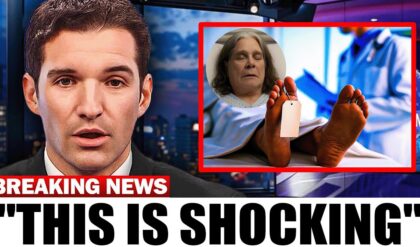HBO’s The Last of Us was once hailed as the gold standard for video game adaptations, with its first season earning near-universal acclaim for its faithful yet innovative take on Naughty Dog’s 2013 masterpiece. However, Season 2, which premiered on April 13, 2025, has plunged into controversy, with a 39% audience approval rating on Rotten Tomatoes and fierce backlash over its handling of The Last of Us Part II’s polarizing revenge narrative. Now, showrunner Craig Mazin has confirmed what many fans feared: the series will stretch the story of Part II across four seasons, a decision some are calling “the worst” possible outcome. With the show already struggling to maintain its fanbase, is this ambitious plan a bold vision or a recipe for disaster? Let’s explore the confirmation, the fan reaction, and the challenges facing HBO’s flagship series.

The Four-Season Confirmation: A Plan Revealed
The announcement that The Last of Us will span four seasons came from multiple sources, solidifying earlier speculation. In February 2025, HBO’s Head of Drama, Francesca Orsi, told Deadline that the series is “looking like” four seasons, though she cautioned, “We don’t have a complete or final plan.” Showrunner Craig Mazin, speaking to Collider after Season 2’s sixth episode, elaborated, stating, “There’s no way to complete this narrative in a third season,” and suggested a fourth season is “pretty likely” to wrap up the story. Neil Druckmann, co-creator and Naughty Dog’s studio head, has echoed this, emphasizing that the team is taking its time to do justice to Part II’s dense narrative.
Season 1 adapted the entire first game across nine episodes, but Part II, with its 22–26-hour main story and up to 42 hours for full completion, is far more expansive. Season 2, at seven episodes, covers only a portion of the game, focusing on Ellie’s (Bella Ramsey) revenge mission after a devastating event—Joel’s (Pedro Pascal) death at the hands of Abby (Kaitlyn Dever). The decision to split Part II across multiple seasons was driven by “natural perforations” in the narrative, with Mazin noting that Season 3 will likely be longer and Season 4 may be needed to fully explore the game’s concluding chapters. HBO renewed Season 3 before Season 2’s premiere, and Mazin’s comments suggest a fourth season is all but assured if viewership holds.
Why Four Seasons? The Narrative Challenge
The Last of Us Part II is a beast of a story, alternating perspectives between Ellie and Abby, introducing new factions like the Washington Liberation Front (WLF) and the Seraphite cult, and weaving a non-linear timeline of flashbacks and present-day conflicts. The game’s narrative, set five years after the first, begins in Jackson, Wyoming, where Joel and Ellie have settled with Tommy (Gabriel Luna), Dina (Isabela Merced), and Jesse (Young Mazino). A shocking act of violence propels Ellie into a cycle of vengeance, while Abby’s parallel journey explores grief and redemption. The game’s structure, with its dual protagonists and lengthy epilogue, doesn’t lend itself to a single season without significant cuts.
Mazin and Druckmann have cited the need to preserve the story’s emotional and thematic depth as the rationale for the four-season plan. They’ve rearranged elements, such as revealing Abby’s backstory earlier than in the game, to suit the passive medium of television, where players’ control over pacing is absent. Material cut from the game, including scenes in The Last of Us Part II Remastered (2024), has been incorporated, and new characters like Gail (Catherine O’Hara), a therapist in Jackson, expand the world. Mazin has promised that Season 3 will dive deeper into Abby’s perspective, likely focusing on her WLF and Seraphite conflicts, while Season 4 could tackle the game’s epilogue and Ellie’s post-Seattle arc.
This approach contrasts with Season 1, which covered the first game’s tighter 15-hour story in nine episodes. Fans on Reddit have noted that Part II’s “obvious acts” and “natural cliffhangers” support splitting it into multiple seasons, with some suggesting Season 2 ends at a pivotal midpoint, leaving ample content for Seasons 3 and 4. However, the decision to stretch the story has sparked concerns about pacing, narrative bloat, and the risk of losing viewers over an extended timeline.
Fan Backlash: “The Worst” Decision
The confirmation of four seasons has ignited a firestorm among fans, many of whom already view Season 2 as a misstep. The season’s 39% audience score on Rotten Tomatoes, compared to a 95% critic score, reflects a stark divide. X posts capture the outrage, with @Neil_Druckmann_sux writing, “They’re milking TLOU2 for FOUR seasons? Neil’s ego is ruining this show!” The backlash stems from several grievances, amplified by the four-season plan:
Joel’s Early Death: The decision to kill Joel in episode 2, mirroring the game’s controversial twist, alienated fans who saw him as the show’s heart. X user @J0hnADouglas lamented, “They got rid of the best part of the show and their lead. Why?” The flashback-heavy episode 6, “The Price,” attempted to mitigate this by revisiting Joel and Ellie’s Jackson years, but its late placement and deviations—like omitting the game’s dinosaur museum exhibits—left fans like @YellowFlashGuy unimpressed, calling it a “FAIL” to save the season.
Pacing and Structure: Season 2’s seven-episode run, shorter than Season 1’s nine, feels rushed yet incomplete to many. TIME criticized the season for stretching Part II too thin, with minimal development for new characters like Abby and Isaac (Jeffrey Wright). Fans on Reddit’s r/TheLastOfUs2 argue that compressing the first game into one season was a mistake, and now “milking” Part II for three seasons feels like overcompensation. The four-season plan raises fears of further bloat, with one user warning, “Season 4 would either be dragging it out or inventing new stuff.”
Casting and Performances: Bella Ramsey’s Ellie and Kaitlyn Dever’s Abby have drawn mixed reactions. Some fans, like those on IMDb, feel Ramsey’s portrayal lacks the game’s vibrancy, while Dever’s less muscular Abby deviates from the game’s physicality, a choice Mazin justified as non-essential for TV. While Isabela Merced’s Dina and Catherine O’Hara’s Gail have been praised—The New York Times called Merced “charming” and O’Hara “predictably wonderful”—others argue these additions distract from the core story.
Fidelity to the Game: The show’s changes, such as replacing the game’s spore-based infection with fungal tendrils and altering Abby’s introduction, have frustrated purists. The four-season plan amplifies concerns that HBO will diverge further, especially since Naughty Dog’s The Last of Us Part III is years away, leaving Seasons 3 and 4 reliant on Part II’s content alone. Fans on X, like @Sacrosanctus, fear the show is “dragging the pain out” unnecessarily.
The sentiment that four seasons is “the worst” reflects a broader distrust in Mazin and Druckmann’s ability to sustain the story’s momentum. The game’s polarizing reception in 2020, driven by Joel’s death and Abby’s prominence, already split fans, and the show’s similar trajectory has reignited those debates. A Reddit user encapsulated the frustration: “I can’t believe they compressed the first game…just to milk the second game for three f***ing seasons.”
Why Four Seasons Could Work
Despite the backlash, there’s a case for the four-season plan. The Last of Us Part II’s narrative is significantly larger than the first game, with dual protagonists, multiple factions, and a complex timeline. Mazin has emphasized that the story’s scale demands more time, telling Deadline, “The story we’re telling is much bigger than Season 1.” The game’s non-linear structure, with flashbacks like Ellie’s museum visit and Abby’s Seattle days, offers rich material for expansion. Season 2’s inclusion of cut game content, such as Gail’s role, shows the writers’ intent to deepen the world, a tactic that worked in Season 1’s Bill and Frank episode.
The performances remain a strong asset. Pedro Pascal’s Joel, though limited post-episode 2, shines in flashbacks, with IGN praising his “pitch-perfect” work in episode 6. Isabela Merced’s chemistry with Ramsey has been a highlight, and Jeffrey Wright’s Isaac adds gravitas, even if underutilized. HBO’s commitment to sustainable production, driven by Ramsey’s “green rider” contract, and high production values—filming in Kamloops and Calgary—ensure a visually stunning experience. Fans on Reddit’s r/ThelastofusHBOseries argue that four seasons allow for a “much expanded epilogue” and more Jackson scenes, leveraging the costly set.
Mazin’s assurance that the show won’t go beyond the games’ source material, unlike Game of Thrones’s controversial ending, offers reassurance. With Part III unlikely to release before 2030, Seasons 3 and 4 can focus on Part II’s depth, potentially avoiding the pitfalls of inventing new stories. Orsi’s comment about “intriguing survivalist groups” suggests Seasons 3 and 4 will explore the WLF and Seraphites in detail, adding fresh dynamics.
The Risks: Fan Fatigue and Narrative Drift
The four-season plan is not without risks. Season 2’s viewership, down 15% from Season 1’s 8.2 million per episode, signals waning interest. The long gap between seasons—Season 3 won’t begin filming until 2026, with a potential release in May 2027 or later—could exacerbate fan fatigue. Splitting Part II into two halves, with Season 2 ending mid-story, creates a significant narrative interruption, especially since Season 3 will likely shift to Abby’s perspective. Fans on X, like @PuppetMaster, worry that stretching Part II over three seasons feels excessive, especially without Part III to guide the endgame.
The show’s deviations, such as altering Abby’s physique and omitting key game moments like the “Future Days” song (due to the show’s 2003 timeline shift), have already sparked backlash. Further changes in Seasons 3 and 4 risk alienating purists, while new content could feel like filler if not carefully integrated. RollingStone warned that even minor updates could have an “enormous impact” on the story’s reception, and TIME criticized Season 2’s “insubstantial” feel due to its partial adaptation. The challenge is maintaining the emotional weight of Part II’s themes—revenge, forgiveness, and trauma—over an extended run without diluting its impact.
Can HBO Turn the Tide?
With Season 2’s finale airing on May 25, 2025, HBO faces a critical moment. The episode, teased as “explosive” by ComicBookMovie, must deliver a compelling cliffhanger to justify the long wait for Season 3. Mazin and Druckmann’s track record—Season 1’s 9/10 from IGN and critical acclaim—suggests they can navigate complex narratives, but they must address fan concerns. Expanding Abby’s role in Season 3, as promised, could win over skeptics if Dever’s performance deepens her character, while returning to Jackson’s ensemble, including Merced and Luna, could anchor the story emotionally.
HBO’s marketing, careful to avoid spoilers about Abby, has kept some surprises intact, but the network must rebuild trust. Engaging fans through behind-the-scenes content, like the Building The Last of Us series, and addressing criticisms about pacing and casting could help. The four-season plan, while ambitious, hinges on delivering blockbuster-quality episodes, as Mazin promised, to sustain momentum.
Conclusion: A High-Stakes Gamble
The confirmation that The Last of Us will stretch to four seasons has polarized fans, with many decrying it as “the worst” decision amid Season 2’s rocky reception. The revenge arc, marred by Joel’s early death and pacing issues, has struggled to recapture Season 1’s magic, and the prospect of two more seasons raises fears of narrative bloat and fan alienation. Yet, the plan reflects a bold commitment to Part II’s sprawling story, with potential to deepen characters and themes if executed well. As HBO navigates this high-stakes gamble, the success of Seasons 3 and 4 will determine whether The Last of Us can reclaim its status as a cultural phenomenon or become a cautionary tale of overambition.





